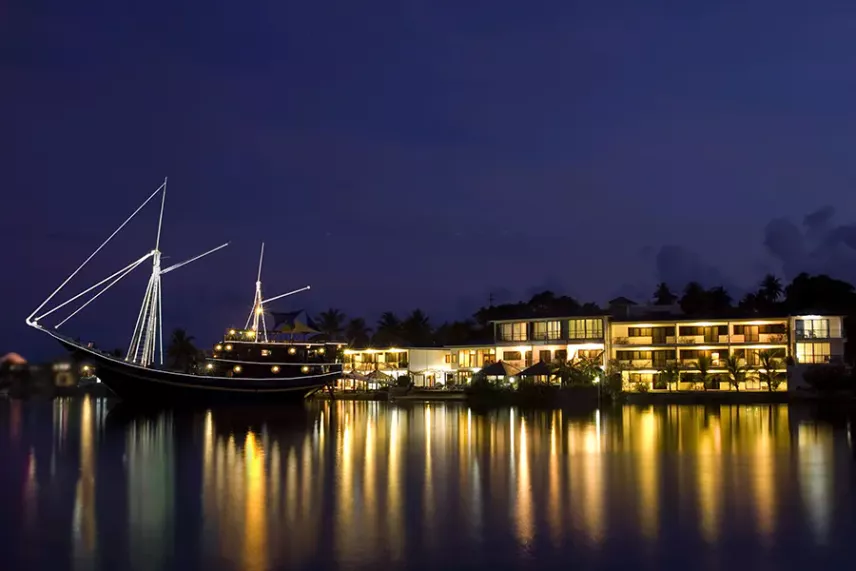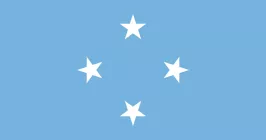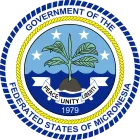Micronesia

Geographical Location of Micronesia
The Federated States of Micronesia is a huge archipelago in the western Pacific Ocean. The country consists of 607 islands in the eastern and central parts of the Caroline archipelago, east of the Philippines. The landscape alternates between two main types: volcanic islands and coral atolls. The islands of Pohnpei, Kosrae, and the islands of Chuuk Lagoon are rich in mountains and are of volcanic origin. On the other hand, the main island of Yap is of continental origin. Almost all other islands are flat coral atolls. The country's largest island is Guam. The islands are divided into four groups: Yap, Chuuk, Pohnpei and Kosrae. They also make up four states in the country.
The climate is tropical, warm all year round. It rains a lot and Pohnpei is known as one of the wettest places in the world, with an annual rainfall of 4,900 mm. The islands are highly susceptible to natural disasters such as hurricanes and droughts. Some of the underlying islands are expected to disappear completely due to rising sea levels.
Brief History of Micronesia
The Federated States of Micronesia was settled around 1000 BC. People came to the Yap Archipelago from the Philippines or Indonesia, and people migrated north from Fiji and Vanuatu to other islands. Society in the Yap archipelago beyond the 2nd century developed into a vast kingdom that had great influence over the region. The kingdom had a caste system and a unique type of economy based on a culture of trade and barter. At the same time, extensive defensive structures and religious centers were built on the islands of Pohnpei and Kosrae. In the 16th century, the islands were discovered by Portuguese sailors. Soon after, Spanish sailors arrived and established the first colonies in the area.
In 1899, Germany bought the islands from Spain before Japan occupied the territory in 1914. During World War II, the islands were occupied again, this time by American troops. Before the country gained independence in 1979, they belonged to the UN surveillance zone, administered by the United States. Since 1986, Micronesia has had some association with the United States through a compact of free association. The US gains access to strategically located islands in exchange for managing the country's defense and providing financial assistance.
Society and Politics of Micronesia
The highest legislative body of the Federated States of Micronesia is the Congress, consisting of 14 senators. The four senators are elected by the states for four-year terms. The remaining ten are elected for two-year terms from smaller districts divided by population. The executive branch is the president, elected by Congress from among four state representatives. The presidency varies between states. Congress has no political parties and has fairly little power in local affairs. Each of the four federal states has a high degree of autonomy. The states also have different cultural and historical traditions.
Micronesian society is still characterized by a traditional culture, where the social rank of the inhabitants is largely determined by the hierarchy within the clans. The traditional clan structure has become less important in recent years, but especially among older people the culture has persisted.
Economy and Trade of Micronesia
The business sector in the Federated States of Micronesia is underdeveloped. The country is completely dependent on US financial support. This support was gradually withdrawn, particularly following suspicions that aid money was being used for corruption. Among other things, the health and education sectors are mainly financed by American aid, and even if the country wants to free itself, they have nothing to fall back on. The difference between rich and poor has also become a major problem for the country.
The most important sector of the economy of the Federated States of Micronesia is the fishing industry and the sale of fishing licenses to foreign players.
Many also engage in farming, but this industry is mainly for their own use. The country has a large trade deficit as imports exceed exports several times. It is believed that in the future the tourism industry can become the most important sector of the economy. However, the lack of infrastructure and the isolated location of the country currently make large-scale development of the industry difficult.







